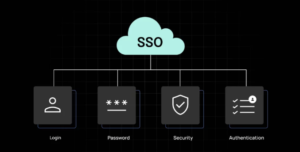
Higher education just hit a new low. For years, universities and colleges have been viewed as pillars of intellectual growth, knowledge dissemination, and societal progress. However, recent trends suggest that the prestige once associated with these institutions is quickly eroding. From skyrocketing tuition fees to declining academic standards, students, educators, and administrators alike are grappling with the repercussions of a rapidly changing academic landscape.
In this article, we will explore the various factors contributing to the current state of higher education, offering insights into the ways in which the system is failing both its students and the society at large. By examining key areas such as affordability, academic integrity, student satisfaction, and the impact of technology, we aim to shed light on how higher education just hit a new low has reached this disappointing crossroads.
The Cost of Education: A Growing Burden
One of the most glaring issues contributing to the decline of higher education is the escalating cost. Tuition fees have risen exponentially in recent decades, far outpacing inflation and wage growth. As a result, students are graduating with crushing amounts of debt, which has led many to question whether a college degree is still worth the financial sacrifice.
Moreover, as universities become more reliant on tuition fees for funding, the quality of education seems to have taken a backseat. Rather than investing in better faculty, resources, or facilities, many institutions are focused on maximizing profits. This shift in priorities often leaves students with a less-than-optimal learning experience. The emphasis on revenue generation has led to overcrowded classrooms, understaffed departments, and a lack of personalized academic support.
While some argue that the cost of education is a reflection of the increasing demand for higher learning, it is clear that the financial burden is driving many students to reconsider whether pursuing a degree is worth the price. With many students resorting to loans to cover their expenses, the stress of post-graduation debt has become an additional weight on their shoulders, further fueling the argument that higher education just hit a new low is on a steep decline.
Diminishing Academic Standards: The Quality Debate
The quality of education provided by many institutions of higher learning has been under scrutiny for years. With a focus on enrollment numbers and profit generation, universities are often more concerned with attracting students than maintaining rigorous academic standards. This shift has resulted in a dilution of academic programs, as courses are designed to be more accessible and less challenging in order to boost graduation rates.
The grading system itself has become more lenient, with many universities adopting grade inflation practices. The result is a generation of graduates who may struggle when faced with the demands of the real world. While higher education should aim to produce critical thinkers and skilled professionals, the current system often prioritizes passing students over ensuring that they genuinely understand the material.
Furthermore, the rise of online learning has exacerbated this issue. While it offers convenience, the lack of face-to-face interaction and the ability to track student engagement means that many students can simply coast through courses without fully grasping the content. This lack of academic rigor further contributes to the decline in the quality of higher education just hit a new low
The Impact of Technology: Are Students Really Learning?
Technology has undoubtedly revolutionized the way education is delivered, but it has also raised questions about the effectiveness of traditional learning methods. While online courses, virtual classrooms, and digital resources have made learning more accessible, they have also introduced new challenges.
Students are often distracted by the constant pull of social media, online games, and other digital temptations. As a result, their engagement with academic material has significantly declined. The rise of technology has led to a shift in how students approach learning, with many opting for shortcuts like online study guides and cheat sheets rather than diving deep into the material.
Furthermore, technology has also played a role in the fragmentation of education. With so many online platforms and programs offering certification, students may feel that traditional degrees are becoming less relevant. This has resulted in the undervaluing of a degree from a well-established institution, as alternative routes to acquiring knowledge and skills are gaining more credibility. This shift in the value of traditional education contributes to the decline of higher education’s reputation.
The Strain on Faculty: Overworked and Underappreciated
Another factor contributing to the decline of higher education just hit a new low is the treatment of faculty members. Many professors and lecturers are underpaid, overworked, and expected to juggle multiple roles without adequate support. With the increasing reliance on adjunct professors and part-time faculty, who often lack job security and benefits, the quality of teaching suffers.
Full-time faculty members are often stretched thin, balancing research obligations with teaching responsibilities, and sometimes even administrative tasks. This overwhelming workload leaves little time for one-on-one student engagement or for creating an enriching, interactive learning environment. As a result, students may feel that they are merely another number in a lecture hall, with little attention paid to their individual needs or academic progress.
Moreover, with the growing emphasis on research over teaching at many universities, educators may feel less incentivized to provide quality instruction. The pressure to publish and secure funding often takes precedence over improving the student experience, leading to a disconnect between what students need and what faculty are able to provide.
Student Mental Health: A Crisis on Campus
As the pressures of academic life increase, so too does the mental health crisis among college students. The stress of managing coursework, financial burdens, and the uncertainty of the job market is taking a serious toll on students’ well-being. Recent studies have shown that anxiety, depression, and other mental health disorders are more prevalent on college campuses than ever before.
While some universities have begun to offer mental health services and resources, these are often insufficient to meet the growing demand. Students are left feeling unsupported and overwhelmed, leading to a decline in their overall academic performance and satisfaction with their education. The combination of financial stress, academic pressure, and social isolation is creating an environment where students are more likely to burn out before they even graduate.
This crisis highlights a fundamental issue with the current state of higher education: institutions are failing to prioritize the holistic development of their students. Academic success is being placed above emotional and psychological well-being, which has led to a toxic culture of stress and burnout.
Conclusion
Higher education just hit a new low. From soaring costs to declining academic standards, the traditional university model is struggling to adapt to the modern world. Students are faced with an education system that is increasingly out of touch with their needs, both financially and academically. The rise of technology, the lack of meaningful engagement from faculty, and the growing mental health crisis are all contributing factors to this decline.
While there are still institutions that strive to provide high-quality education, the overall trend suggests that significant reform is needed. Universities must reassess their priorities, focusing on the well-being of students, the quality of teaching, and the affordability of education. Until these issues are addressed, higher education will continue to face a downward trajectory that risks further undermining its value.
FAQs
- Why has the cost of higher education increased so much?
The rise in tuition fees is largely due to universities relying more on tuition revenue, increased administrative costs, and the growing demand for more student services. - Is a degree still worth it in today’s world?
While a degree can still open doors, the value of a traditional college degree is being questioned as alternatives like online certifications and vocational training gain recognition. - What is grade inflation, and how does it affect education?
Grade inflation refers to the trend of awarding higher grades than students deserve, which can lower academic standards and leave students unprepared for real-world challenges. - How has technology affected student learning?
Technology has introduced distractions and a shift away from traditional learning methods, making it harder for students to focus and fully engage with the material. - What role do faculty members play in the decline of higher education?
Faculty members are often overworked, underpaid, and lacking support, which affects their ability to provide quality education and engage meaningfully with students. - How has the rise of online learning impacted education?
Online learning offers flexibility but can lack the personal interaction and accountability that traditional classrooms provide, leading to disengaged students. - What is the mental health crisis on college campuses?
Many students face significant mental health challenges, including anxiety and depression, due to academic pressure, financial stress, and social isolation. - Are universities failing to adapt to modern student needs?
Yes, many universities continue to operate under outdated models that prioritize profit over student success, leading to dissatisfaction and lower-quality education. - How can universities improve student mental health?
Universities should provide better mental health services, foster a supportive environment, and address the causes of stress and burnout. - What can students do to cope with the pressures of higher education?
Students should seek support when needed, manage their time effectively, and prioritize self-care to balance academic and personal well-being.







